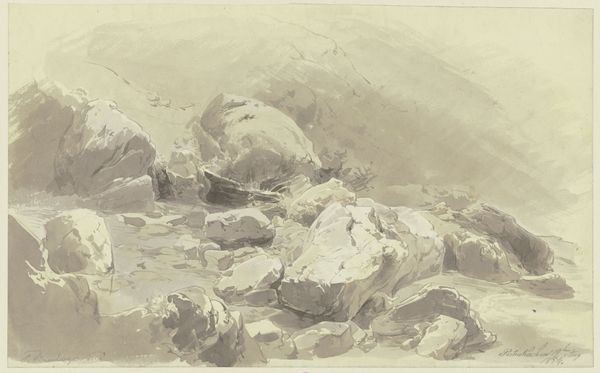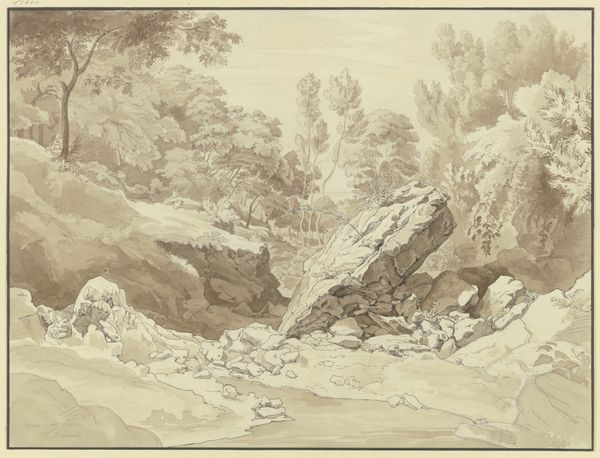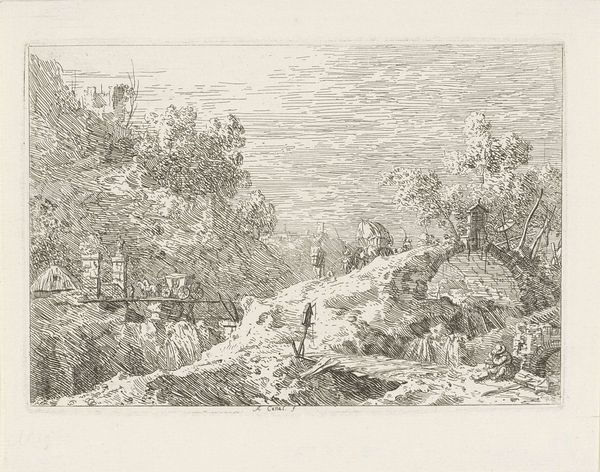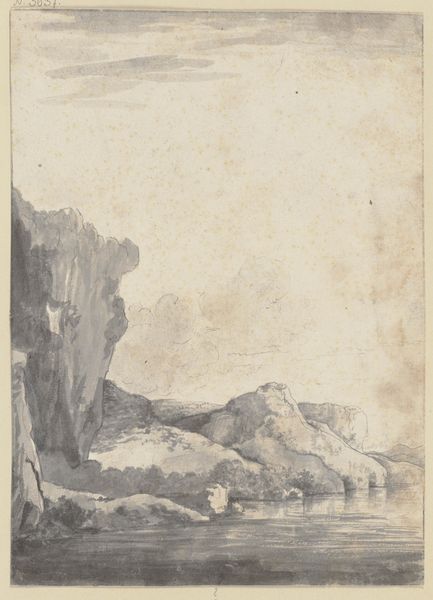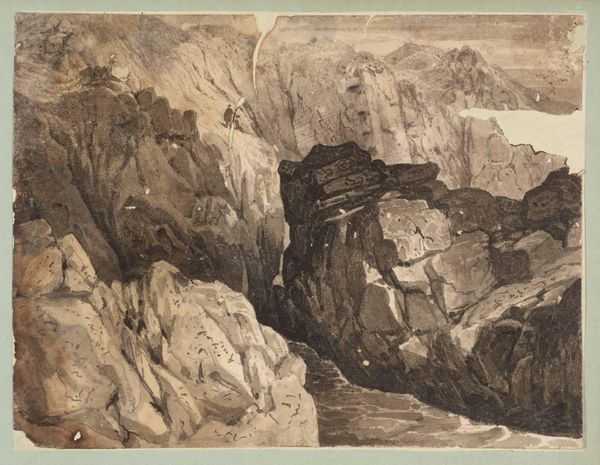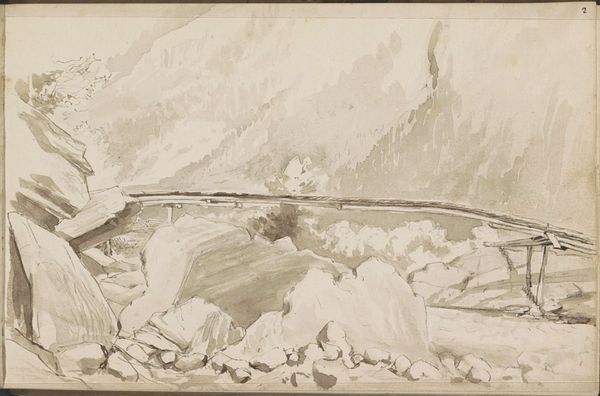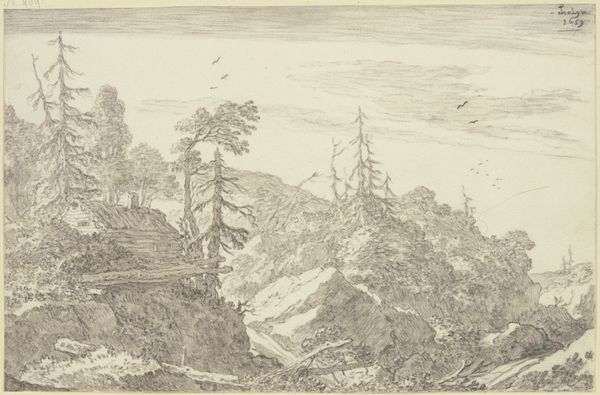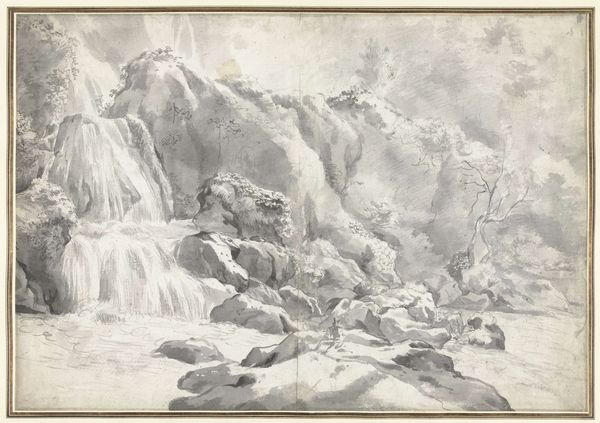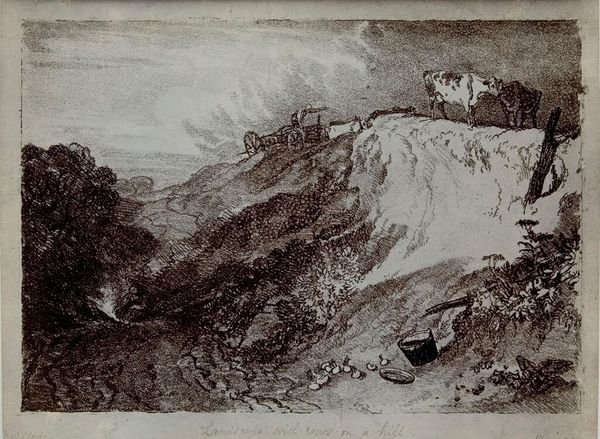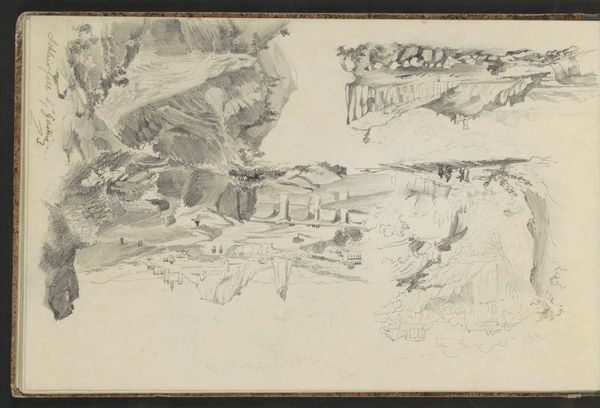
drawing, print, paper, ink, chalk, black-chalk
#
drawing
# print
#
landscape
#
etching
#
paper
#
ink
#
romanticism
#
chalk
#
black-chalk
#
watercolor
#
monochrome
Dimensions: 190 × 243 mm
Copyright: Public Domain
Editor: Here we have "Mountainside with Fallen Tree," an undated drawing by Friedrich Wilhelm Gmelin. It's a monochromatic landscape, made with black chalk, ink, and watercolor. It feels… chaotic. What story do you think it tells? Curator: It tells the story of labor, quite literally. Consider the discarded logs scattered across the lower portion of the drawing. This is not simply a pristine wilderness, but a landscape impacted by resource extraction. Note how Gmelin employed chalk and ink. Do you see the rough, almost industrial quality, to the marks rendering the rocks? Editor: That's interesting. I was focusing on the fallen tree as a symbol of nature's power, but your emphasis shifts the focus to human intervention. So, you're suggesting Gmelin isn’t just depicting nature, but also hinting at the social impact on the land itself? Curator: Precisely! Look at the etching. See how it meticulously reproduces textures? This process invites us to contemplate the relationship between artistic labor, the industrial exploitation of resources, and the depiction of landscape. Do you think Gmelin romanticizes the scene? Editor: Maybe slightly, with the artistic treatment of the light and shadow. However, you have recontextualized the drawing as a reflection on the means of production and the impact of human activity on the natural world, which offers a compelling alternate viewpoint. Curator: Exactly! I’m interested in how raw materials become finished product, and how labor leaves its trace, be it on paper or land. This allows us to see beyond surface appearances, and focus on the material realities embedded within the work. Editor: This makes me reconsider other landscapes in a similar light. I'll definitely look for traces of labor and production.
Comments
No comments
Be the first to comment and join the conversation on the ultimate creative platform.
